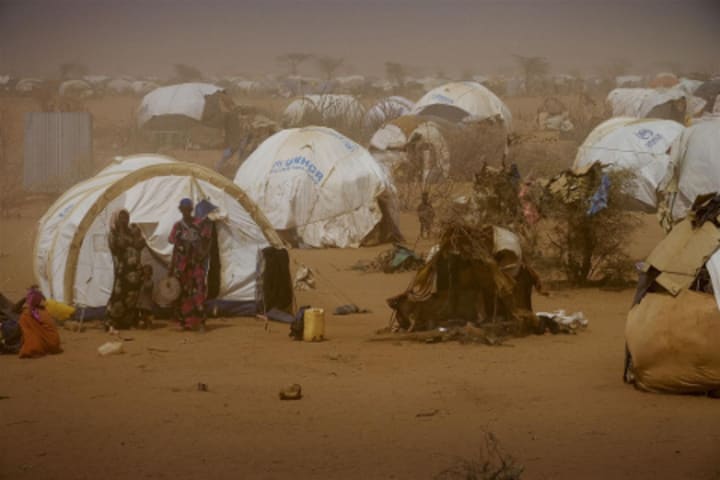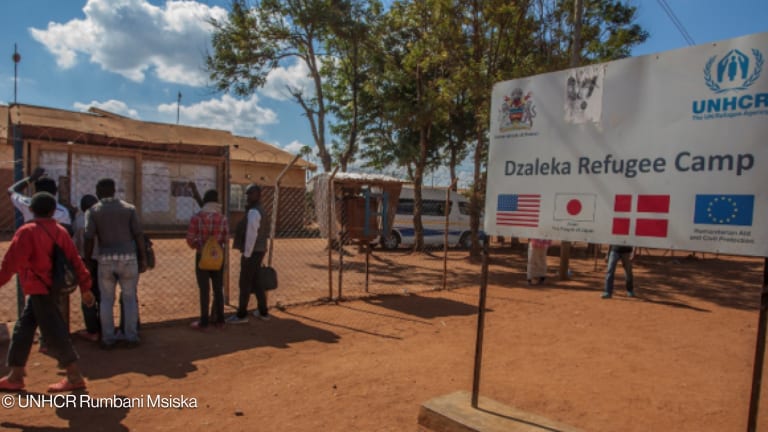
The largest of its kind in the world, the Dadaab refugee compound in northern Kenya is home to almost half a million people — many more than the 90,000 Somali refugees it was intended to host when it was first set up 20 years ago.
The compound comprises four camp areas managed by the U.N. High Commissioner for Refugees, the Kenyan government and a multitude of international and local nongovernmental organizations. The semiarid town is located some 100 kilometers from Kenya’s border with Somalia.
Originally, three camps — Dagahaley, Hagadera and Ifo — were set up between October 1991 and June 1992 to host refugees who fled from the neighboring country’s civil war. A fourth camp, Kambioos, was opened in July 2011 during the height of the drought and famine in Somalia. At the time, more than 1,000 Somalis were crossing the border and arriving in Dadaab every day.
Kambioos can host up to 90,000 people. As of Feb. 12, it was home to 12,360 refugees. Overall, the Dadaab camps have become the home of 463,023 people, according to U.N. data from Feb. 12. Of these, 224,061 are female while 222,525 are male; 186,953 are 60 years or older while 77,246 are below 5.
But not all of the people living in the Dadaab camps arrived there as refugees. The compound is also home to some 10,000 third-generation refugees whose parents were also born in the camps.
CARE International, the Danish Refugee Council, Médecins Sans Frontières, the International Rescue Committee, Oxfam GB, the Norwegian Refugee Council and the Kenyan Red Crescent Society are among the many aid groups working in Dadaab. Along with UNHCR, these groups provide basic services, counseling and protection to camp residents.
Some relief operations in the compound, however, have been put on hold due to security fears — one of the biggest challenges faced by aid workers and by refugees themselves. Other problems include overcrowding, the spread of diseases and seasonal floods.
UNHCR recently launched new measures in an attempt to address these challenges and strengthen the impact of its work in Dadaab. Further, the agency and its partners are continuously looking at ways to deliver more than just temporary refuge to residents of the Dadaab camps.
But on the eve of its 20th birthday, it is clear that Dadaab has become more than a temporary home to hundreds of thousands of refugees. If we had one wish, it’d be that there won’t be a reason for the camps to grow even larger with age.
Read our previous DevTrivia.

